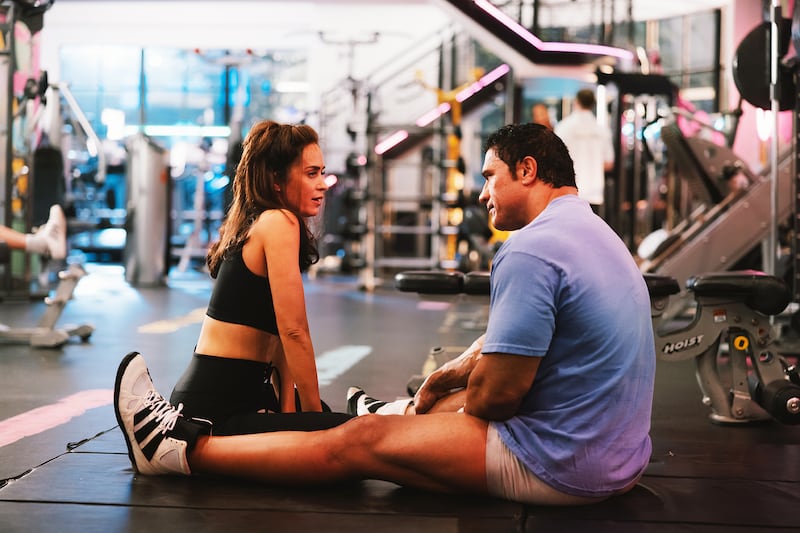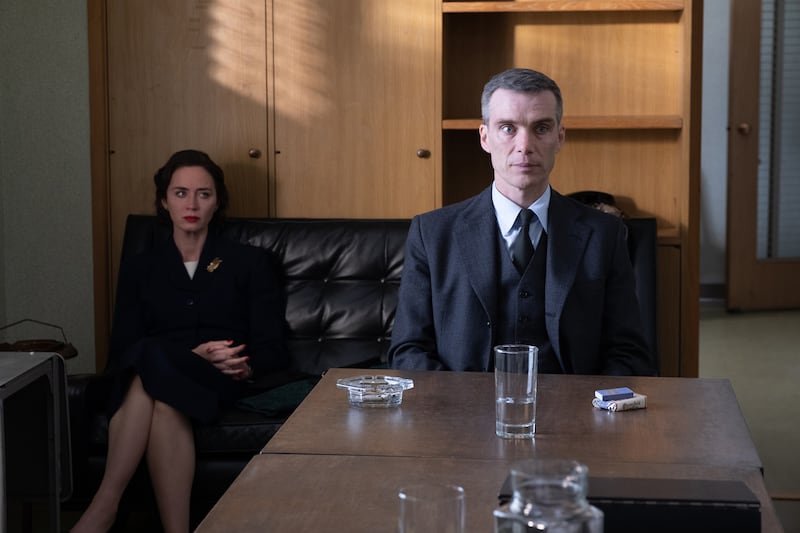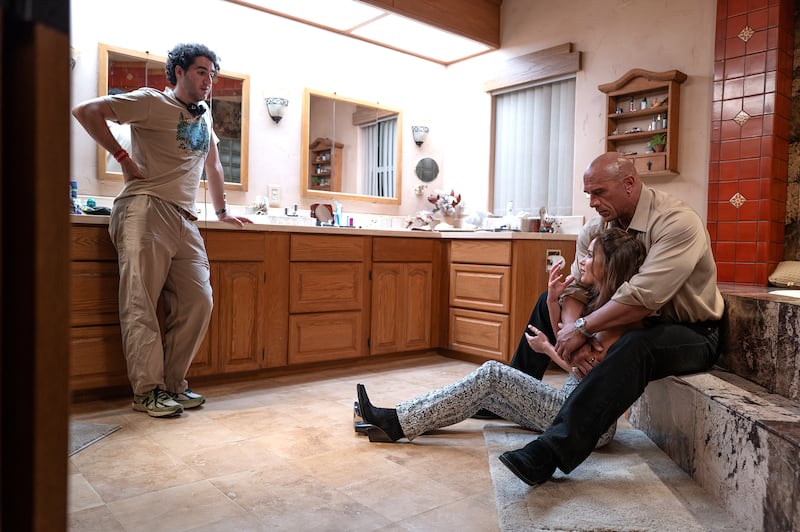There’s a scene about halfway through Benny Safdie’s new movie, The Smashing Machine, in which Emily Blunt tries her hardest to smash through her reputation for playing wives.
Her character, Dawn, accompanies her boyfriend, Mark Kerr (Dwayne Johnson)—though the two, based on actual people—would eventually marry in real life, to a carnival. Despite the gargantuan figure he cuts as an MMA fighter, the mild-mannered and soft-spoken Mark expresses trepidation about going on a ride because it might upset his “tummy.”
A subsequent sojourn on a merry-go-round is more his speed. Dawn eagerly tasks Mark with holding her purse and concessions while she goes it alone. Euphoria and something like relief crosses her face as she lets go of the handrails and allows the gravity of the ride to send her upside down. Later in the evening, Dawn cheers on the motorsports as Mark experiences PTSD, triggering memories of a recent career-pausing loss and concussion.
It illustrates the disconnect between the two characters: not only in how we perceive them—Mark holding on for dear life to everything he thought he knew; Dawn itching to blow everything up—but in how they see each other, and how Mark sees Dawn in particular. Earlier in the movie, Mark buys a ceramic bowl for Dawn in Japan, which Dawn later smashes in a fight. (Maybe she’s the real smashing machine…?)

Mark says to the saleswoman that Dawn “loves color,” yet the only time we see her in a bright color outside of her standard monochromatic wardrobe is, tellingly, at the carnival, her red t-shirt blaring her desire for passion, change, acknowledgement, something, anything… “You don’t know a damn thing about me,” she shouts at him during one of their fights and she’s not wrong.
The Smashing Machine can’t be credited with completely breaking Blunt out of the wife and girlfriend mold she’s found herself stuck in over the course of her two-decade career, since she broke out as the scene-stealing sardonic senior assistant to fearsome fashion magazine editrix Miranda Priestly (Meryl Streep) in The Devil Wears Prada, which she is set to reprise in the sequel next year.
Since then, her biggest roles have been relegated to the wife, as in Into the Woods (where she plays the character literally called The Baker’s Wife) and her Oscar nominated part in Oppenheimer as, you guessed it, Oppenheimer’s wife.
Even some of her starring roles, such as in the A Quiet Place series, hinges on her status as director and actor John Krasinski’s wife both on and off screen, while star vehicles The Girl on the Train and Mary Poppins Returns foist her into that position in spirit if not in fact, along with her female sidekick roles in Pain Hustlers, The Fall Guy, Edge of Tomorrow and Jungle Cruise alongside her Smashing Machine co-star Johnson.

Don’t get me wrong, Blunt is a truly magnetic force in any part, reliably lighting up the screen and elevating even the most undeserving subject matter *cough* Wild Mountain Thyme *cough* But she’s got so much more to offer than just playing the WAG (wife and girlfriend of a sportsplayer).
In that way The Smashing Machine, if not subverts this stereotype, then at the very least points towards it. Dawn’s own entrapment in a toxic relationship—in which there’s more than enough evidence to argue that she’s the antagonist—feels as though Blunt is scratching at the bounds of her pigeonhole.

Emily Blunt and Cillian Murphy in Oppenheimer.
Melinda Sue Gordon/Universal Pictures
When we first meet her she’s the doting girlfriend, making protein shakes for Mark “even though it was made with the wrong milk,” a dietary requirement that changes weekly based on Mark’s workout regime. “I do everything… I wash your f—ing underwear!” she later laments. She follows Mark to his fights in Japan where he ignores her, making her cry in the locker room as she photographically documents Mark playing up his aww shucks nice guy gimmick to his colleagues while weaponizing it against her.
“You’re always trying to insert yourself into everything,” Mark says later in the film, when he’s sober and he and his trainers don’t want her to accompany him. “I don’t believe people should bring their wives or girlfriends to fights because you need to be extremely focused and keep distractions to a minimum,” says Mark Coleman, Kerr’s friend and fellow fighter, in the 2002 documentary of the same name on which the Safdie movie is based.

Dawn’s role is fleshed out in the fictional adaptation: her questioning whether their relationship will be as passionate when Mark is sober is intriguing, and she has her own mental health issues, being involuntarily committed after she threatens to kill herself. A cursory glance at the real-life Dawn’s Instagram bio indicates that she’s a former Playboy model—which the film doesn’t acknowledge—is currently a real estate agent and the mother of Kerr’s child, who is now a young adult. Now that’s a biopic I would watch.
The Smashing Machine rightly has Oscar buzz for Johnson, who might just be the first wrestler to vie for an Academy Award (sorry Dave Bautista). Blunt also deserves recognition and will likely be circling the Best Supporting Actress category. But for once I’d like to see her slough off the supporting parts and contend for Best Actress in a leading role.
The post Emily Blunt Deserves Better Than the Wife Role in ‘Smashing Machine’ appeared first on The Daily Beast.




